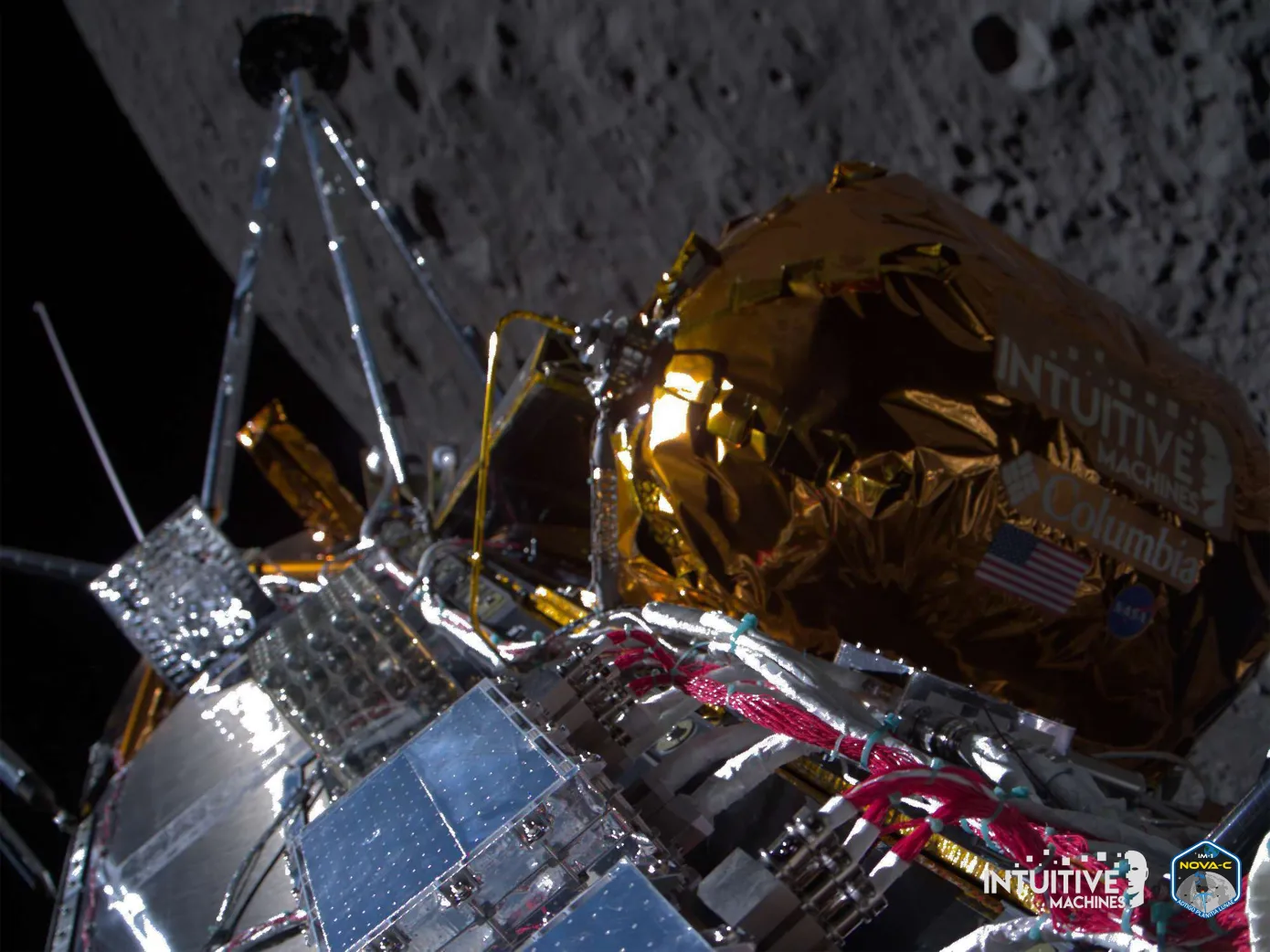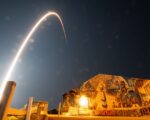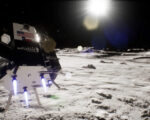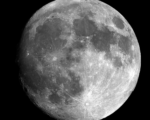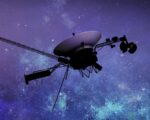Intuitive Machines’ spacecraft made an unconventional touchdown on the lunar surface yesterday, landing sideways. CEO Steve Altemus confirmed during a press conference on Friday that while it wasn’t a flawless landing, it’s nothing short of a miracle that the spacecraft landed intact at all.
During the conference, Altemus used a small model of the lander to demonstrate how engineers believe the spacecraft, named Odysseus, descended based on the most recent telemetry data.
“The vehicle is stable near or at our intended landing site,” Altemus stated. “We’re currently downloading data from the buffers in the spacecraft and commanding it accordingly.”
Intuitive Machines confirmed yesterday that the lander touched down on the surface at 5:24 p.m. Central Time, marking the company as the first to successfully land a privately built spacecraft on the moon. However, many details regarding the vehicle’s condition were unknown. One contributing factor to this uncertainty was that the onboard camera, known as EagleCam, was powered down during landing. Consequently, engineers had to rely on alternative data sources to determine the lander’s orientation post-landing.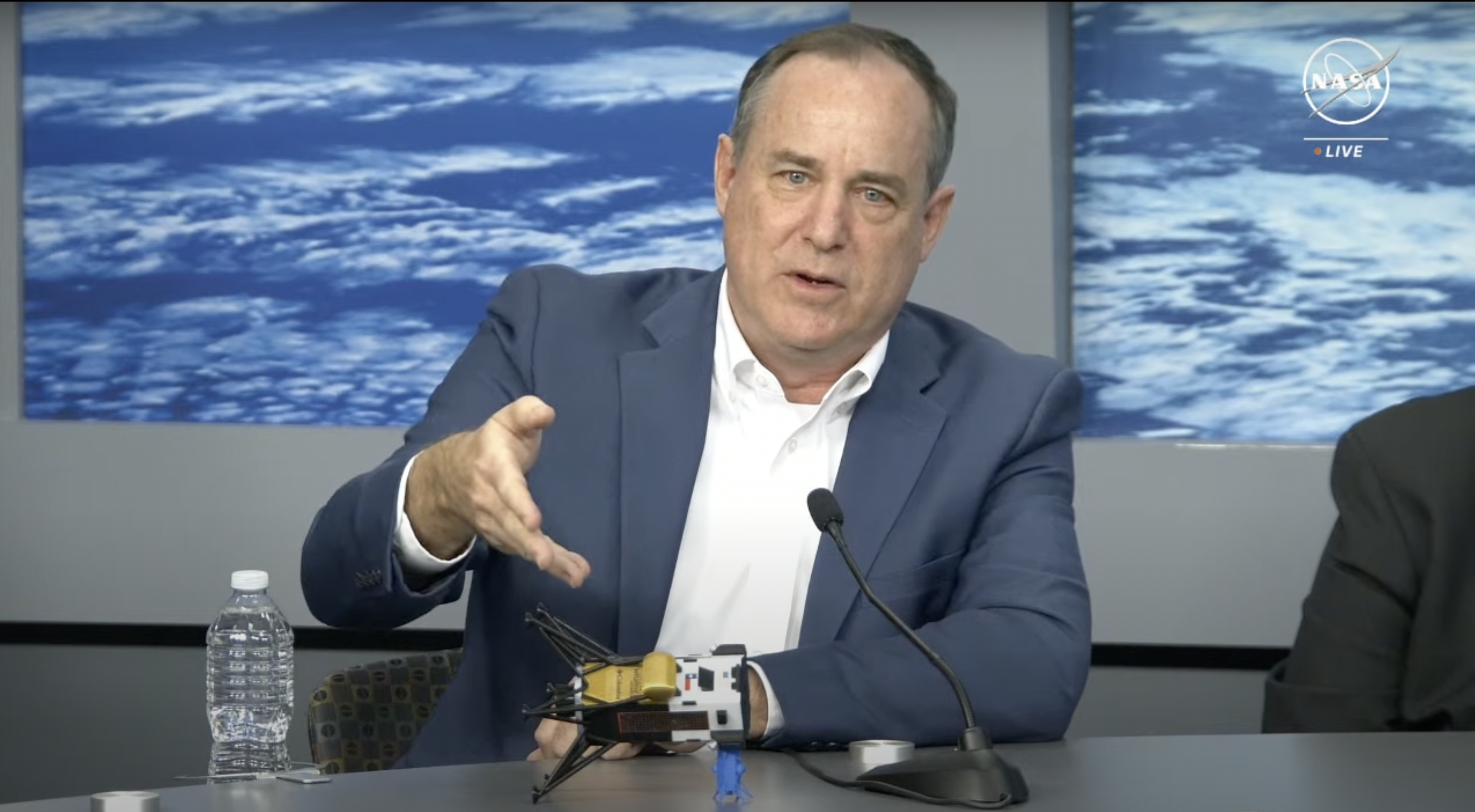
Even at this moment, the company is diligently piecing together the sequence of events leading up to the historic landing. Initially, Intuitive Machines believed that Odysseus was upright, but Altemus clarified that this assumption was based on “stale” telemetry data. Current information suggests that the spacecraft was indeed vertical upon touchdown. However, due to its horizontal movement, which was slightly excessive, it’s probable that one of its legs either caught on an obstacle or broke, resulting in the tilt.
The silver lining is that most of the onboard payloads are situated on panels other than the downward-facing one, which is the only panel not required to function on the lunar surface. The company has confirmed that many of the major subsystems, including the solar arrays providing power and the onboard payloads, are operating as expected.
The success of much of the mission can be attributed to the swift decision-making by Intuitive Machines’ mission controllers — coupled with a stroke of fortunate luck.


